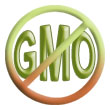Clone-derived Meat Entered UK Food Chain Last Year, Says FSA
By James Meikle and Leigh Phillips
The Guardian
August 3, 2010
Meat from second clone offspring was intercepted before it could be sold, and third animal found in dairy herd
Meat from the offspring of a cloned cow entered the UK food chain a year ago, the Food Standards Agency (FSA) revealed today, in the first official confirmation of a breach of food laws.
A second bull born from an embryo taken from a cloned cow was slaughtered last week, but the meat was intercepted before it could be sold. The agency has found another cloned offspring in a dairy herd.
It said there was no evidence that consuming food from healthy clones or their offspring posed a risk, but its sale had not been authorised under legislation on 'novel foods'.
However, there was confusion when officials from the European commission said the FSA was wrong in its interpretation of the EU regulations, and that offspring of cloned animals were not covered.
A commission official said at a briefing in Brussels: "There could be lots of milk from the offspring of cloned animals in Europe as there is no need to notify the authorities over this. We have no figures on this."
However, the agency insisted that it was sticking by its interpretation.
The revelation by the FSA comes amid unverified claims that a British farmer was selliing milk from a cow bred from a clone and allegations that more than 100 cattle have been bred from clones in Britain.
The FSA said it had traced two bulls born in the UK from embryos harvested from a cloned cow in the US.
"Both of these bulls have been slaughtered. The first, Dundee Paratrooper, was born in December 2006 and was slaughtered in July 2009. Meat from this animal entered the food chain and will have been eaten. The second, Dundee Perfect, was born in March 2007 and was slaughtered on 27 July 2010. Meat from this animal has been stopped from entering the food chain."
It added: "The agency is continuing its work on tracing the offspring of clones claimed to produce milk for the UK dairy industry. We have traced a single animal, Dundee Paradise, which is believed to be part of a dairy herd but at present we cannot confirm that milk from this animal has entered the food chain. As part of this investigation local authority officials are visiting the farm on which this herd is kept."
The agency declined to give any further details of the animals it had traced, nor their owners or the farms they were on. But it went on: "The agency would like to remind food business operators of their responsibility to ensure food they produce is compliant with the law.
"In order to produce food products from clones or their offspring, a novel food application must be submitted and authorisation granted at a European level before any such food is placed on the market. The FSA is the UK authority responsible for accepting novel food applications. The penalty for failing to comply with the Novel Foods Regulations is a fine of up to £5,000."
The revelation will be used by critics as an example of how food laws are failing to keep up with developments in breeding technology. Food derived from clones can be legally sold in the US but no applications have been made for similar moves in Europe.
Embryos from cattle cloned in the US began being imported into Britain three years ago but no official checks have been kept on their offspring. The European parliament called last month for a definitive ban on clone-derived food. The commission and council of ministers will now be under severe pressure to quickly consider the plea.

